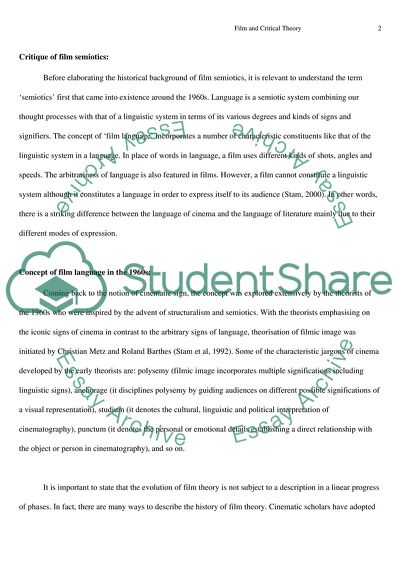Cite this document
(Semiotics of Cinema and Film Theory Term Paper Example | Topics and Well Written Essays - 2486 words, n.d.)
Semiotics of Cinema and Film Theory Term Paper Example | Topics and Well Written Essays - 2486 words. Retrieved from https://studentshare.org/visual-arts-film-studies/1732162-film-and-critical-theory
Semiotics of Cinema and Film Theory Term Paper Example | Topics and Well Written Essays - 2486 words. Retrieved from https://studentshare.org/visual-arts-film-studies/1732162-film-and-critical-theory
(Semiotics of Cinema and Film Theory Term Paper Example | Topics and Well Written Essays - 2486 Words)
Semiotics of Cinema and Film Theory Term Paper Example | Topics and Well Written Essays - 2486 Words. https://studentshare.org/visual-arts-film-studies/1732162-film-and-critical-theory.
Semiotics of Cinema and Film Theory Term Paper Example | Topics and Well Written Essays - 2486 Words. https://studentshare.org/visual-arts-film-studies/1732162-film-and-critical-theory.
“Semiotics of Cinema and Film Theory Term Paper Example | Topics and Well Written Essays - 2486 Words”, n.d. https://studentshare.org/visual-arts-film-studies/1732162-film-and-critical-theory.


